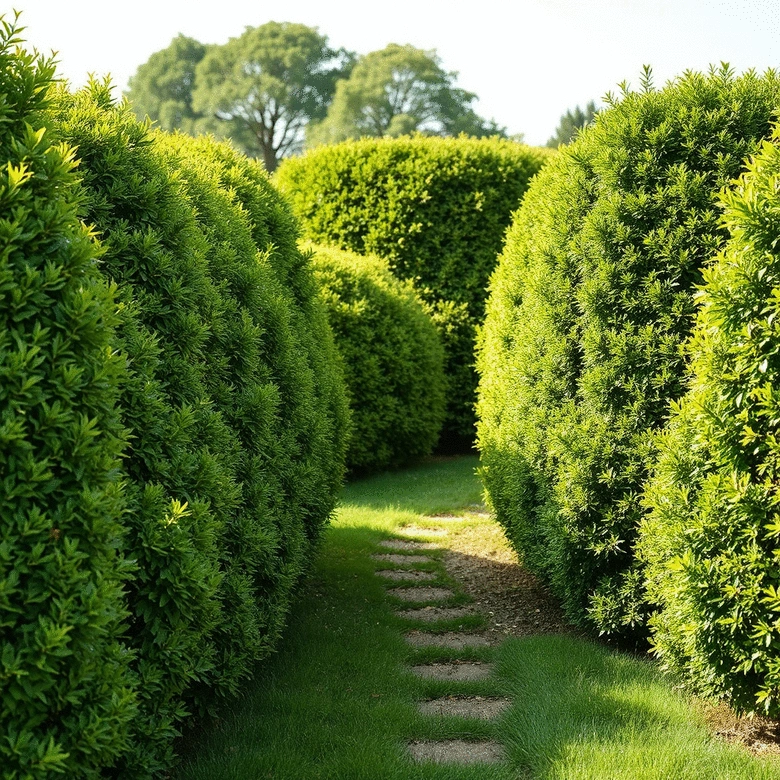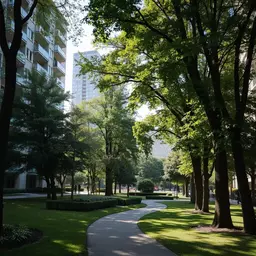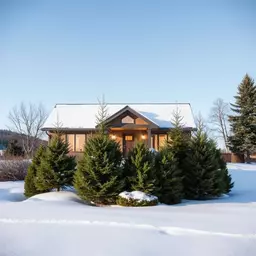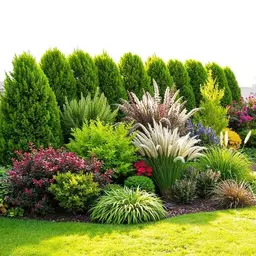Designing Your Shrub Living Fence
Creating a living fence is not just about aesthetics; it's a transformative journey that enhances your property's beauty while offering numerous ecological benefits. With proper planning and the right selection of plants, you can create a sanctuary for both your family and local wildlife.
What You Will Learn
- A living fence enhances privacy and visual appeal, acting as a natural barrier that beautifies your landscape.
- Different shrubs can serve as a natural sound barrier, muffle noise, and create tranquility in your outdoor space.
- Living fences contribute positively to the environment by supporting biodiversity, improving air quality, and preventing soil erosion.
- Incorporating a variety of native plants can create wildlife habitats and attract beneficial insects, enhancing your garden's ecosystem.
- Visual aids, such as design diagrams and infographics, can streamline the planning process and help you visualize your living fence layout.
- Understanding regional climate considerations is crucial for selecting the right plants that will thrive in your specific environment.
- Knowledge of sunlight and watering needs is essential for maintaining a healthy living fence; proper care ensures long-term success.
Ecological Benefits of Living Fences
Living fences contribute positively to the environment in several ways:
Habitat Creation
Living fences provide shelter and food for various bird species and beneficial insects.
Air Quality Improvement
Trees and shrubs absorb carbon dioxide and release oxygen, enhancing the air quality around your home.
Soil Erosion Prevention
The root systems of shrubs help stabilize the soil, reducing erosion and runoff.
Biodiversity Support
Various plant species in living fences attract a wider range of wildlife, fostering biodiversity.
Understanding the Benefits of a Living Fence with Shrubs
At Branch & Border, we celebrate the magic of nature in transforming outdoor spaces. One of the most impactful ways to enhance your property is by creating a living fence with shrubs. Not only does it serve as a beautiful boundary, but a living fence also offers incredible benefits that go beyond mere aesthetics. Let's dive into the many advantages that come with planting a living fence!
From enhancing privacy to adding lush beauty to your yard, a living fence plays an essential role in your landscape design. Imagine stepping into your backyard and feeling enveloped by greenery instead of an ordinary fence! Shrubs and trees not only block the view from outside but can also create a serene environment for you and your family to enjoy. For more on creating natural boundaries, explore the privacy benefits of living fences.
Enhancing Privacy and Aesthetic Appeal
Privacy is one of the primary reasons many homeowners choose a living fence. A well-designed living fence can act as a natural barrier, providing you with peace and comfort. Here are a few ways living fences enhance your space:
- Visual Appeal: A living fence adds color and texture, making your garden more inviting.
- Natural Sound Barrier: Shrubs can help muffle noise, creating a more tranquil atmosphere.
- Year-Round Interest: With the right selection of plants, you can enjoy beauty in every season!
When planning your living fence, consider the specific shrubs that resonate with your personal style. At Branch & Border, I always emphasize choosing plants that not only match your aesthetic but also thrive in your environment!
Ecological Advantages of Living Fences
Living fences also contribute positively to the environment. They foster biodiversity, support wildlife, and can even improve soil quality. Here are some ecological benefits:
- Habitat Creation: Living fences provide shelter and food for various bird species and beneficial insects.
- Air Quality Improvement: Trees and shrubs absorb carbon dioxide and release oxygen, enhancing the air quality around your home.
- Soil Erosion Prevention: The root systems of shrubs help stabilize the soil, reducing erosion and runoff.
By incorporating a living fence into your landscape, you're not just beautifying your property; you're also making an eco-friendly choice that benefits the planet! Consider trees for effective windbreaks to further enhance your property's ecological resilience.
Creating Wildlife Habitat and Biodiversity
Embracing the idea of a living fence means embracing nature. A well-planned living fence creates a sanctuary for wildlife, allowing them to flourish right in your backyard. Consider these key points:
- Plant Variety: Mixing different species of shrubs attracts a wider range of wildlife.
- Native Plants: Using local species supports the ecosystem and encourages native wildlife to thrive.
- Food Sources: Berry-producing shrubs can provide nourishment for birds and other animals.
As a passionate landscape designer, I find immense joy in helping clients create spaces that not only serve their needs but also nourish the natural world. Incorporating a living fence is a step towards a more vibrant and sustainable garden!
Pro Tip
Did you know? Selecting native plants for your living fence not only supports local wildlife but also reduces maintenance needs. Native species are adapted to your local climate and soil conditions, making them more resilient to pests and diseases. This choice allows you to create a thriving ecosystem while enjoying a beautiful and low-maintenance landscape!
Visual Aids to Enhance Your Living Fence Project
Creating a living fence is an exciting journey, but sometimes it can feel overwhelming. That's where visual aids come into play! They can transform abstract ideas into tangible plans, helping you get a clearer picture of what you want your outdoor space to look like.
By using design diagrams and planting layouts, you can visualize the placement of your shrubs and trees. This not only ensures that you're making the best choices for your space but also enhances the overall beauty and functionality of your living fence. For options suitable for more compact spaces, consider trees for small yard privacy.
- Design diagrams help in planning the overall layout.
- Planting layouts show where each plant will go.
- Visual aids can aid in understanding growth patterns.
- They help in estimating the space and light requirements.
Infographics for Quick Reference
Infographics are a fantastic way to relay information in a visually appealing format. They can summarize plant care, growth timelines, and even seasonal maintenance tips for your living fence. By utilizing infographics, you can keep essential information at your fingertips!
Imagine having a colorful graphic that outlines what plants thrive best in your local climate or a chart that clearly shows when to prune your shrubs. This resource can be invaluable when you're busy juggling multiple tasks, and it makes gardening much more enjoyable!
- Quick facts about plant types and their maintenance.
- Seasonal care timelines for efficient upkeep.
- Visual comparisons of plant heights and widths.
- Watering and sunlight needs for different plants.
Addressing Common Questions about Living Fences
When embarking on your living fence journey, you may have a lot of questions, and that's completely normal! At Branch & Border, we believe that understanding the ins and outs of your project is crucial for success. With a bit of guidance, you'll feel confident in your decisions!
Some common questions I encounter include the best plants for specific climates, how to care for new growth, and what to do about pests. Let's dive into some of those important topics so you can be well-prepared as you plan your living fence.
FAQs: What You Need to Know Before Planting
Before you get started, it's essential to tackle some common FAQs. This can help clarify any doubts and set you on the right path. Here are some key considerations:
- What is a living fence?
- A living fence is a natural barrier created by planting shrubs, trees, or other plants in a line to serve as a boundary, enhance privacy, or provide aesthetic appeal.
- What are the primary benefits of a living fence?
- Living fences offer enhanced privacy, aesthetic appeal, natural sound buffering, habitat creation for wildlife, air quality improvement, and soil erosion prevention.
- How do living fences support biodiversity?
- By incorporating a variety of native plant species, living fences provide shelter, food sources (like berries), and nesting sites for diverse bird species, beneficial insects, and other local wildlife, fostering a healthier ecosystem.
- Why are visual aids important for planning a living fence?
- Visual aids like design diagrams and planting layouts help in visualizing the placement of plants, understanding growth patterns, estimating space and light requirements, and ensuring the overall beauty and functionality of the fence, making the planning process more streamlined.
- What should I consider regarding regional climate for my living fence?
- Understanding your regional climate is crucial for selecting plants that will thrive. Factors like temperature extremes, rainfall, and humidity will influence which species are most suitable. For example, drought-resistant plants are ideal for dry areas, while other shrubs may flourish in humid zones.
Here are some key considerations:
- What are the most suitable plants for my climate?
- How much space should I leave between each plant?
- What type of soil is best for the chosen plants?
- When is the ideal time to plant my living fence?
Regional Considerations: Adapting to Your Climate Zone
Every region has its unique climate, and understanding this is critical when designing your living fence. In my experiences at Branch & Border, I've seen how plants thrive in different environments, and it's fascinating to see how local conditions can impact growth.
For example, if you're in a dry area, you'll want to select drought-resistant plants. Conversely, if your space is in a humid zone, certain shrubs might flourish better there. Knowing your climate zone can make all the difference!
Understanding Sunlight Requirements and Watering Needs
Sunlight and water are two essential elements that influence plant health. Having a clear understanding of the specific needs for your plants will ensure a thriving living fence. Here’s a quick rundown of factors to consider:
- Identify areas in your yard that receive full sun vs. partial shade.
- Know how much water each plant type requires.
- Adjust your watering schedule according to the season.
- Consider using drip irrigation for efficient watering.
Final Thoughts on Creating a Beautiful Living Fence
Creating a living fence is a rewarding process that requires careful planning. I encourage you to take your time and gather all the information needed for long-term enjoyment. The beauty of a living fence lies not only in its looks but also in how it enriches your outdoor space! You can also find more resources and ideas at Branch & Border.
Remember, at Branch & Border, we’re here to support you every step of the way. So don’t hesitate to reach out with your questions or for guidance on your project! Let's get started on this exciting journey together!
Call to Action: Start Your Living Fence Project Today
Are you ready to transform your outdoor space? The first step is to envision the living fence of your dreams! Gather your ideas, research your options, and feel free to contact us at Branch & Border for personalized assistance. Together, we can create a stunning, sustainable living fence that enhances your property and provides the privacy you desire!
Recap of Key Points
Here is a quick recap of the important points discussed in the article:
- Enhancing Privacy: A living fence provides a natural barrier for increased privacy and tranquility.
- Ecological Benefits: Living fences foster biodiversity, improve air quality, and help prevent soil erosion.
- Wildlife Habitat: Incorporating a variety of native plants can attract and support local wildlife.
- Visual Aids: Utilize design diagrams and infographics to plan and maintain your living fence effectively.
- Common Considerations: Be aware of climate, soil type, and plant spacing to ensure the success of your living fence project.






